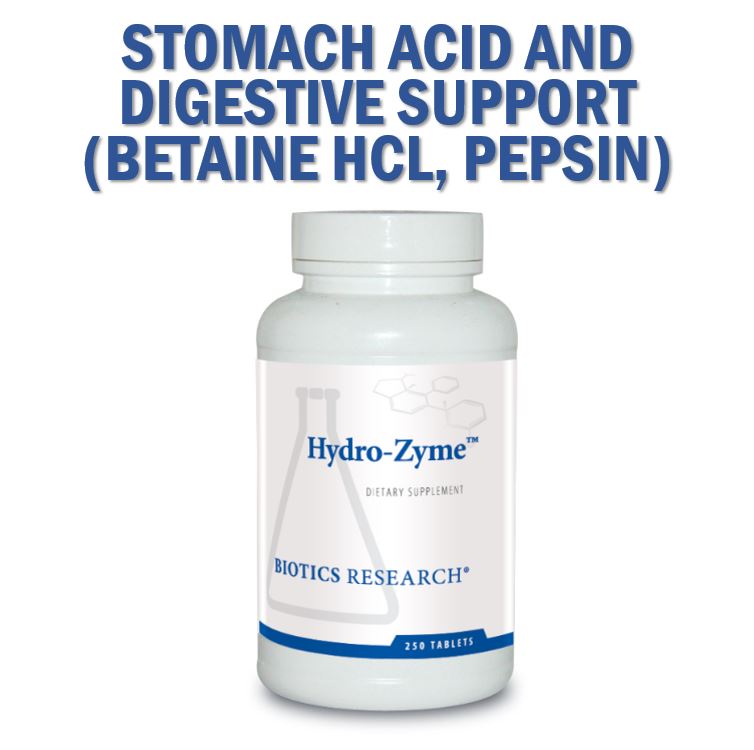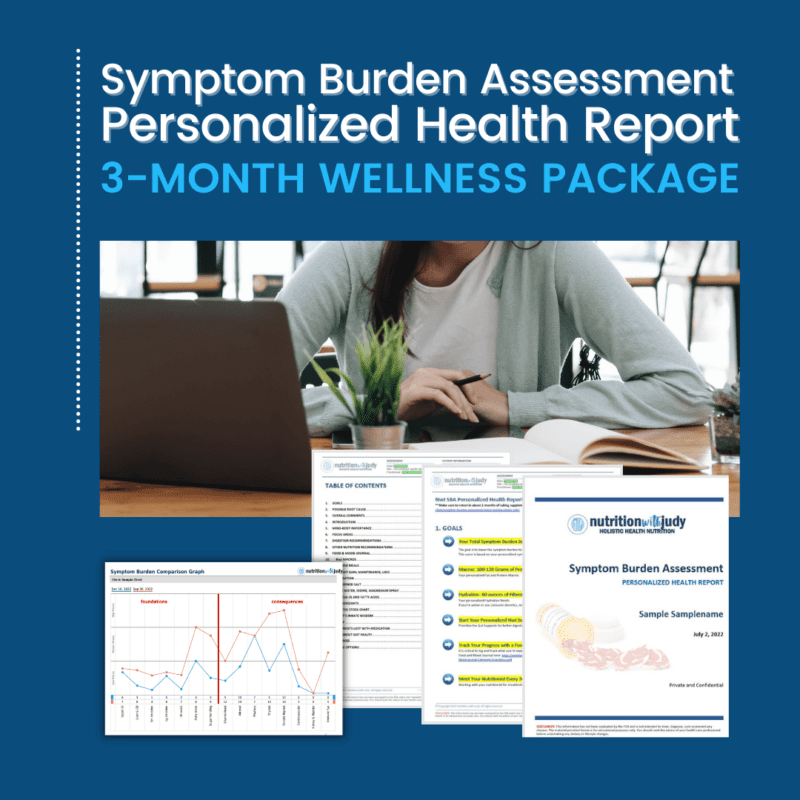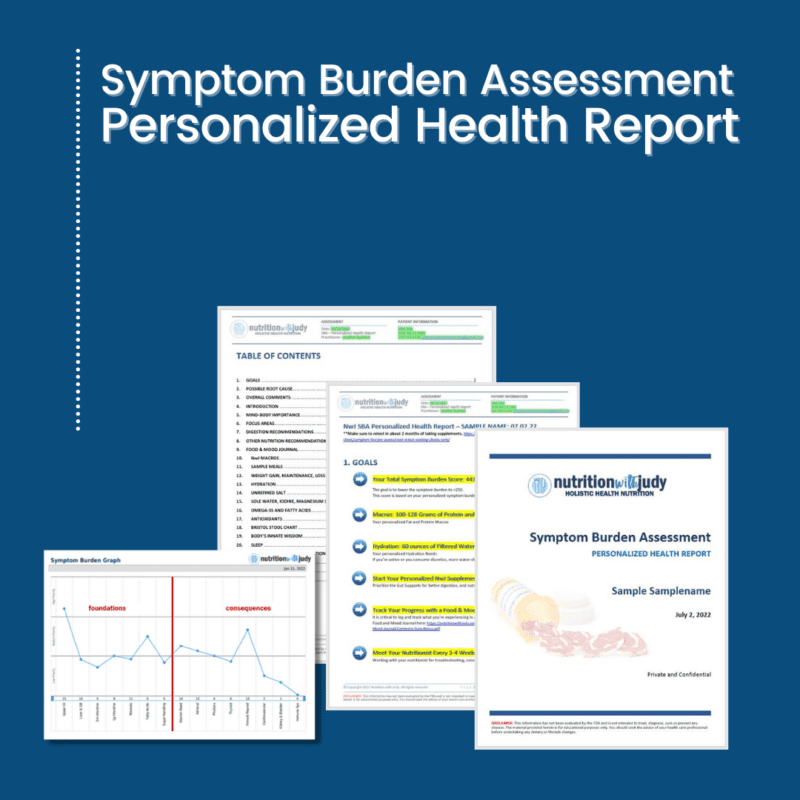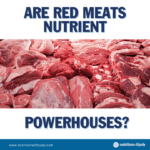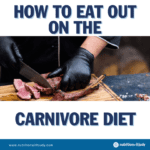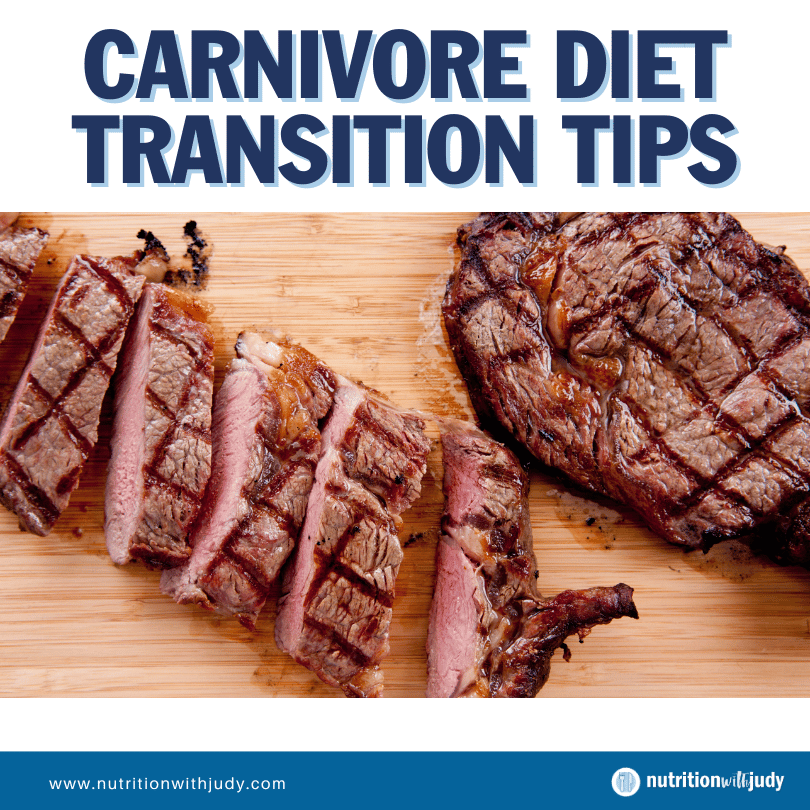

Carnivore Diet Transition Tips


Transitioning to a carnivore diet can be a significant shift for your body. This dietary adjustment can prompt a series of symptoms commonly referred to as the “low-carb flu” or “keto flu.” These symptoms include feeling run down, experiencing heart palpitations, headaches, and a general sense of malaise. The root cause of these discomforts often ties back to an imbalance in electrolytes that occurs as your body adapts to utilizing fat for fuel instead of carbohydrates.
However, there’s good news. We have all the leading tips for helping reduce these symptoms as you transition to this way of eating. These act as temporary supports until your body becomes acclimated, so don’t worry – you won’t need to take any supplements long-term.
Let’s take a closer look at the best practices for transitioning to a carnivore diet.
What Is the Carnivore Diet?
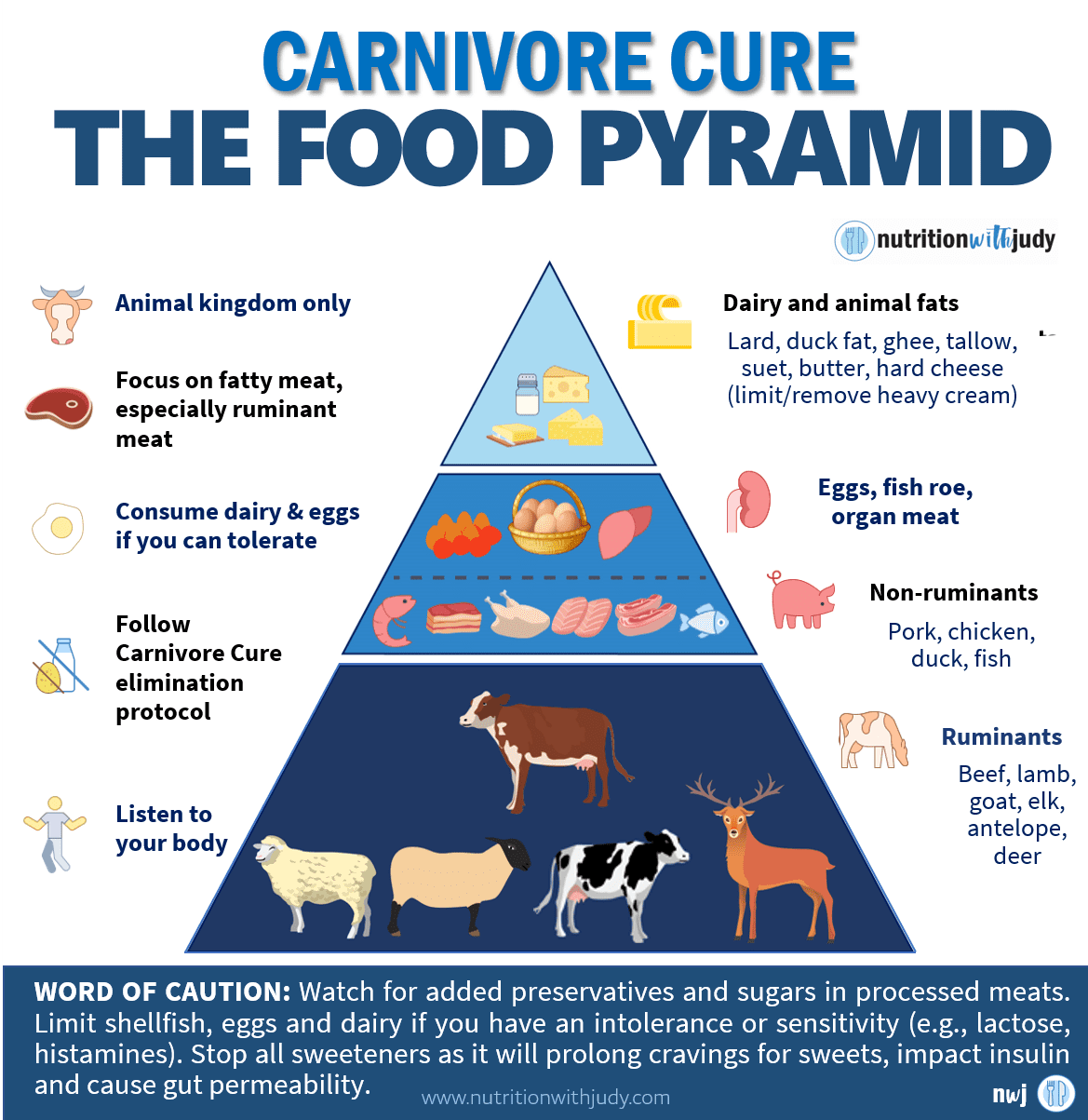

The carnivore diet, centered around animal-based nutrition, presents several tailored variations to align with personal health objectives and dietary preferences. Here’s a breakdown of each distinct approach:
- Beef-Only Carnivore Diet: Focused on consuming solely beef, this method is renowned for its simplicity and efficacy, particularly in elimination diets aimed at addressing autoimmune or chronic health conditions. It’s an ideal starting point for those seeking dietary support for health challenges, though a diverse meat intake is recommended for long-term nutritional balance.
- Lion Diet: A more stringent variant, the Lion Diet restricts intake to ruminant meats, salt, and water, serving as an effective elimination diet base with possibilities for gradual reintroduction of other meats. It’s particularly suited for individuals targeting autoimmune and gut health improvements.
- Nose-to-Tail Carnivore Diet: Advocating for a holistic approach, this variation encourages eating all animal parts, including organ meats, to maximize nutrient intake. However, caution with liver and kidney consumption is advised to prevent nutrient excesses, such as vitamin A toxicity.
- Muscle Meat-Only Carnivore Diet: This broader option includes all types of animal muscle meats while excluding organ meats, dairy, and eggs, catering to those seeking a basic elimination diet who are sure of their tolerance for muscle meats.
- Zero-Carb Carnivore Diet: Targeting foods with minimal to no carbohydrates, this diet encompasses dairy, eggs, and all meats, emphasizing meat and animal fats. It’s an excellent choice for individuals without autoimmune or severe chronic health issues who can tolerate dairy and/or eggs.
- Carnivore Keto Diet: Merging ketogenic principles with carnivore diet tenets, this low-carb, high-fat strategy aims to simulate fasting benefits while incorporating low-toxicity keto-friendly foods such as avocados and coconut oil. It’s best suited for those who are metabolically robust and have addressed their chronic health conditions.
- Carnivore-Ish Keto Variation: Offering more dietary flexibility, this mix introduces additional ketogenic elements while prioritizing animal-based foods. It includes alternative keto sweeteners, certain nuts, and other keto-friendly choices, recommended for those who are metabolically healthy and free from food addiction concerns.
- Animal-Based Diet: This inclusive regimen focuses on animal products as its foundation but allows for fruits, honey, and raw dairy. It tends to suit individuals with high metabolic flexibility and elite athletes, based on our clinical observations.
Each carnivore diet variant is designed to cater to different health needs, dietary tolerances, and wellness goals, offering a spectrum of choices for those embarking on an animal-based nutritional journey.
What Are the Benefits of the Carnivore Diet?
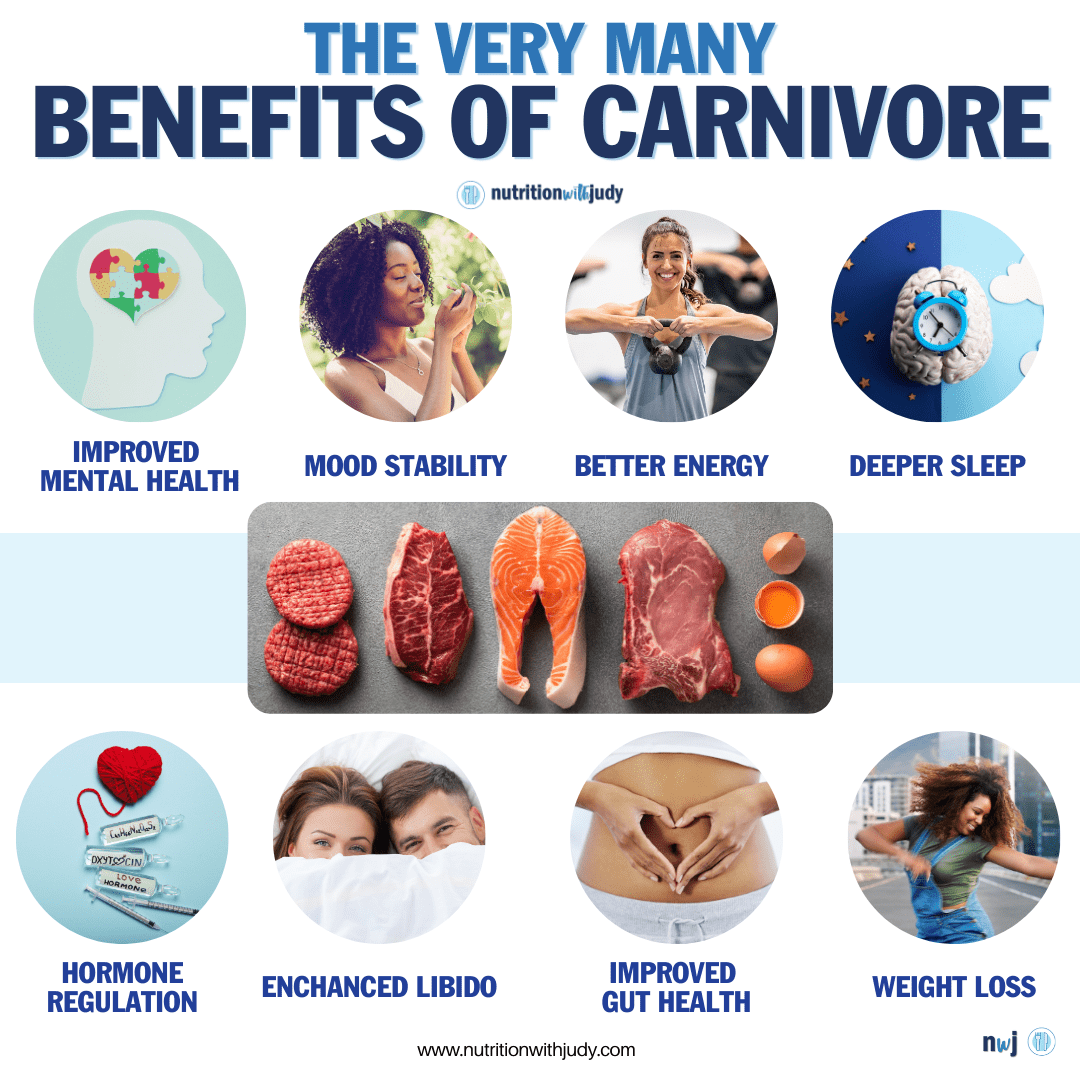

The carnivore diet stands as a groundbreaking approach to nutrition, offering benefits that span across every physiological function and system within the body. From enhancing mental clarity and alleviating symptoms of depression to providing profound support for autoimmune and chronic health issues, the carnivore diet has proven to be a powerful tool for holistic health improvement.
It simplifies the elimination process, identifying potential food sensitivities and reducing inflammation, thereby supporting thyroid and hormonal balance, and optimizing metabolic health. By prioritizing nutrient-dense, bioavailable sources of food, this diet addresses the root causes of numerous health challenges, offering a path to recovery that is both comprehensive and customizable.
Whether one is seeking to heal from long-standing health issues or aiming to achieve peak metabolic flexibility, the carnivore diet presents a viable, nutrient-rich solution that has transformed lives by restoring health and vitality.
Who Should Try the Carnivore Diet?
The carnivore diet has garnered attention from a wide demographic, attracting individuals of all ages and backgrounds. This diet appeals particularly to those seeking a significant health transformation, whether it’s managing autoimmune conditions, tackling chronic health issues, alleviating digestive problems, or simply aiming for an overall improvement in mental and physical well-being.
Individuals grappling with autoimmune diseases or chronic health conditions find solace in the carnivore diet’s elimination approach, which helps identify food sensitivities and reduces inflammation, a common culprit behind many health issues. People struggling with digestive disorders appreciate the diet’s simplicity and its focus on highly digestible and nutrient-dense foods, which can lead to improved gut health and relief from symptoms.
Fitness enthusiasts and athletes are drawn to the diet for its potential to optimize body composition, enhance recovery, and improve performance by providing high-quality protein and fat, essential for muscle repair and energy. Additionally, those interested in weight management find the carnivore diet effective due to its satiating nature, which naturally leads to a reduction in calorie intake without the need to count calories or manage portions meticulously.
The diet’s straightforwardness, coupled with the compelling testimonies of improved health and vitality, resonates with a broad audience. Its ability to be tailored to individual needs—ranging from strict beef-only regimens to more inclusive approaches that incorporate a variety of animal products—makes it a versatile and appealing option for many seeking nutritional strategies that support their health goals and lifestyle preferences.
What Is the Low-Carb Flu?
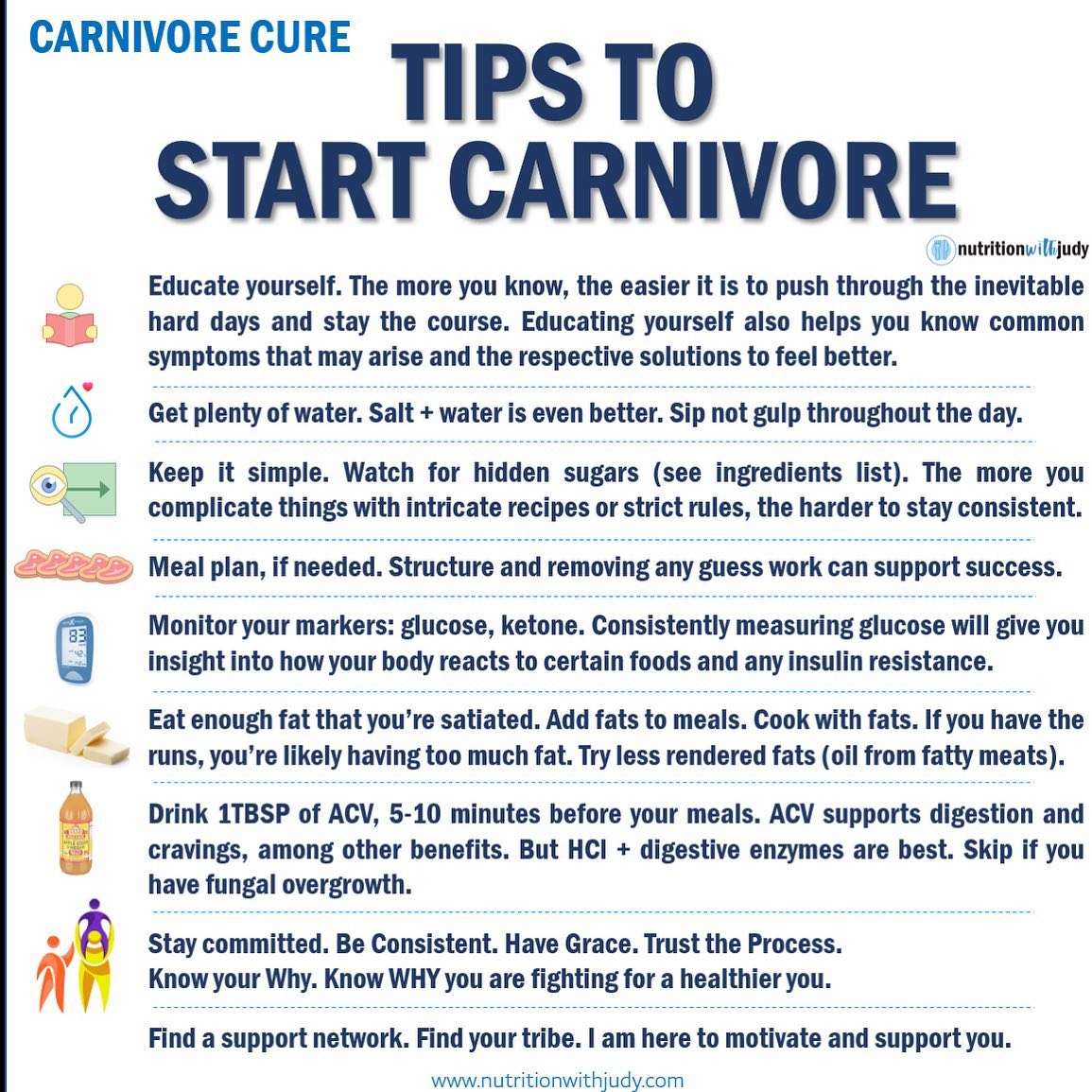

The “low-carb flu,” also known as the keto flu, is a commonly reported phenomenon that occurs during the initial transition to the carnivore diet. This temporary condition mirrors flu-like symptoms, including fatigue, headaches, dizziness, irritability, and muscle cramps.
The root cause of the low-carb flu lies in the body’s adaptation process to a new energy source. Traditionally reliant on carbohydrates for energy, the body must shift its metabolic pathways to utilize fats and proteins as primary fuel sources. This metabolic transition can temporarily disrupt electrolyte balance and hydration levels, leading to the symptoms associated with the low-carb flu.
As the body adjusts to ketosis—the state of burning fat for fuel—these symptoms typically subside, making way for the enhanced energy and focus often reported by long-term adherents of the carnivore diet.
How to Support and Prevent the Low-Carb Flu
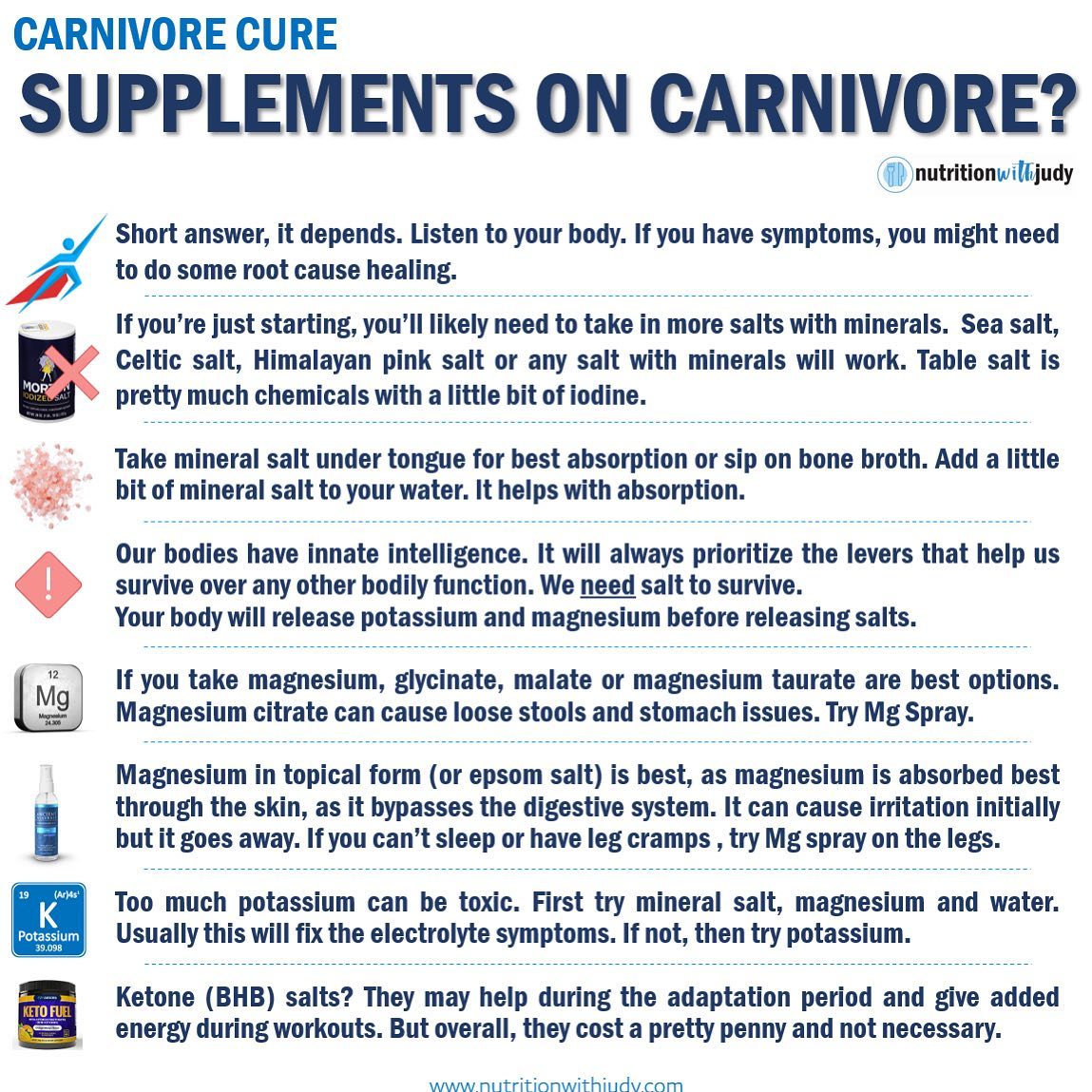

To support the body and prevent the onset of the low-carb flu during the transition to a carnivore diet, strategic steps can be taken to mitigate symptoms and ease the adaptation process. Firstly, ensuring adequate hydration is crucial. The shift to a low-carb diet can lead to a significant loss of water weight, as carbohydrates retain water in the body. Increasing water intake, therefore, can help prevent dehydration and the headaches often associated with the low-carb flu. We generally recommend drinking roughly half your bodyweight in ounces.
Secondly, managing electrolyte balance is essential. The reduction in insulin levels on a low-carb diet can cause the kidneys to excrete more sodium, leading to an imbalance of electrolytes. Supplementing with key electrolytes such as sodium, potassium, and magnesium can help alleviate symptoms such as fatigue, cramps, and irritability. Sole water is our favorite option for electrolytes.
Incorporating bone broth is another effective strategy. Rich in minerals and electrolytes, bone broth can help replenish those lost during the dietary transition, providing support for the body’s adjustment to ketosis. If you suffer from histamine issues, you’ll likely need to skip bone broth for now.
Gradually reducing carbohydrate intake rather than making an abrupt change can also ease the transition and lessen the impact of the low-carb flu, allowing the body to adjust more smoothly to its new fuel source.
Lastly, ensuring adequate fat intake is crucial for maintaining energy levels and supporting the body’s shift to fat metabolism, helping to stave off the low-carb flu and promote overall well-being during the adaptation phase.
Oxalate Dumping Considerations
Oxalate dumping refers to the process where the body begins to excrete accumulated oxalates at a higher rate than usual, a phenomenon that can occur when transitioning too quickly to a carnivore diet. Oxalates are compounds found in many plant foods, and high consumption over time can lead to their accumulation in the body. When the intake of oxalate-rich foods is drastically reduced, as in the switch to a carnivore diet, the body starts to mobilize and eliminate these stored oxalates, which can lead to various symptoms.
Symptoms of oxalate dumping include fatigue, skin rashes, joint pain, kidney stones, and changes in bowel habits. These symptoms result from the irritation and inflammation caused by oxalate crystals passing through the body, particularly affecting the kidneys, skin, and urinary tract.
To prevent oxalate dumping, it’s advisable to transition to the carnivore diet gradually, allowing the body to adjust to lower oxalate levels slowly. This gradual approach helps minimize the release of stored oxalates, reducing the risk of severe dumping symptoms. Additionally, staying well-hydrated can facilitate the elimination of oxalates through urine, while adequate intake of minerals such as calcium and magnesium can help bind oxalates in the gut, preventing their absorption and supporting a smoother transition.
Transitioning From High-Carb Diets to the Carnivore Diet
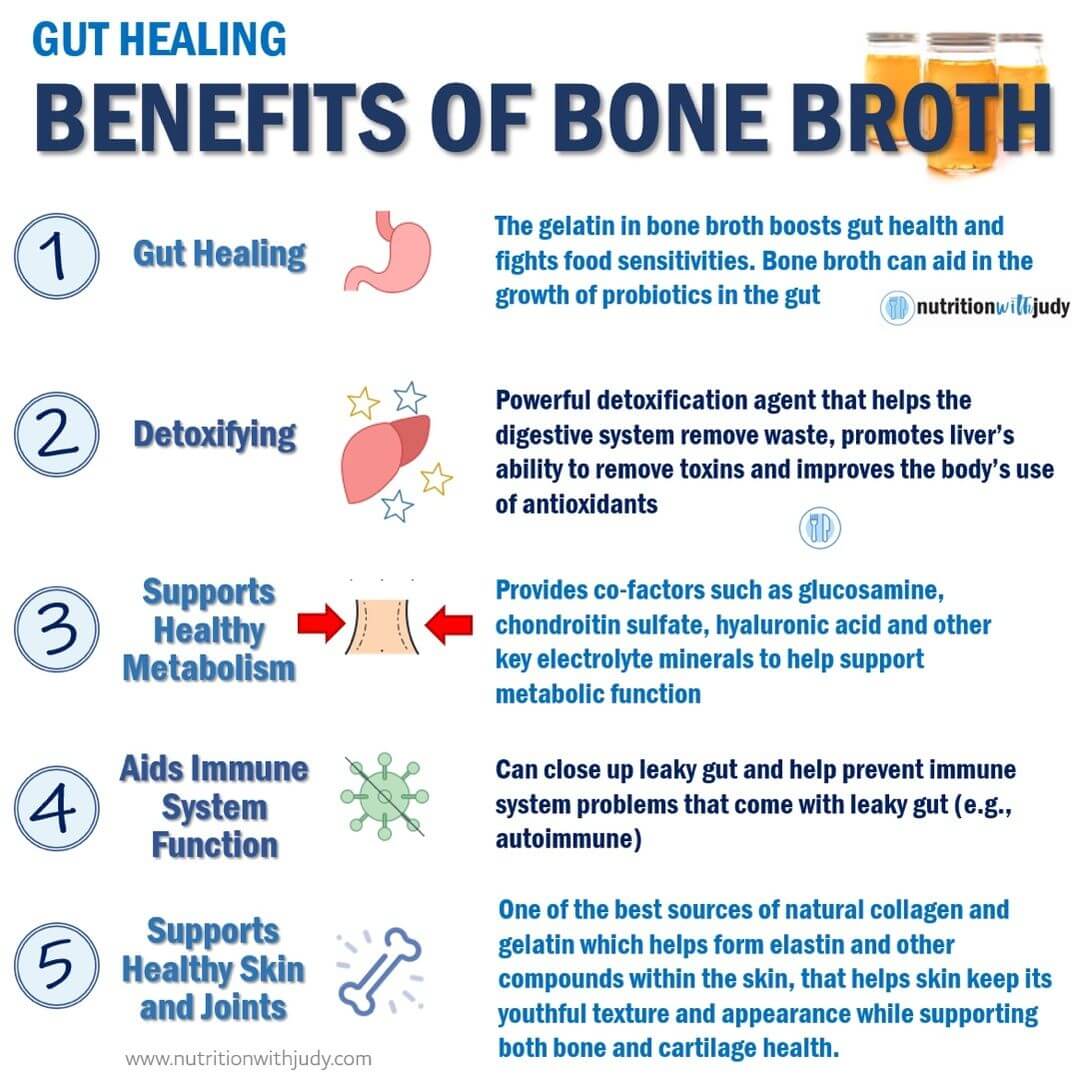

Transitioning from a high-carb diet to a carnivore diet involves significant dietary adjustment, as it requires shifting from carbohydrate-rich foods to exclusively animal-based products. To ease into this transition and mitigate potential symptoms, such as the low-carb flu, it’s essential to adopt a phased approach and incorporate supportive measures.
Begin by gradually reducing carbohydrate intake while simultaneously increasing your consumption of meats, fats, and organ meats. This gradual reduction helps your body adapt to using fats as its primary energy source instead of glucose, minimizing shock to your metabolic system.
Staying hydrated is paramount during this transition. A decrease in carbs can lead to a loss of water and electrolytes, as carbohydrates retain water in the body. Increase your water intake and consider supplementing with electrolytes (sodium, potassium, magnesium) to maintain balance and alleviate symptoms such as headaches and fatigue.
Consuming bone broth can provide both hydration and necessary electrolytes, supporting the body’s adjustment process. Additionally, ensure you’re eating enough fat. High-quality animal fats can help maintain energy levels and satiety, facilitating a smoother transition.
The symptoms, such as fatigue, irritability, and digestive changes, occur as the body adapts to ketosis—a state where it burns fat for fuel instead of carbohydrates. By following these steps, individuals can support their body through the adaptation phase, making the switch to a carnivore diet more manageable.
Transitioning From Low-Fat Diets to the Carnivore Diet
Transitioning from a low-fat diet to a carnivore diet represents a dramatic shift in nutritional intake, focusing on high-fat, protein-rich animal products. This change can cause symptoms as the body adapts to a different fuel source, primarily because it involves increasing fat consumption significantly after a period of restriction.
To facilitate this transition, it’s crucial to start slowly, gradually incorporating more fats into your diet to allow your digestive system to adjust. Begin with leaner cuts of meat and progressively include fattier options, such as ribeye steaks or ground beef with a higher fat content. This gradual increase helps your gallbladder and liver adapt to metabolizing more fat without overwhelming them.
Fat supports such as ox bile, lipase, or digestive enzymes may also be used to assist with this transition. These supplements should be used temporarily until your gallbladder and liver have adapted to the high-fat content of this diet.
Proper hydration and attention to electrolytes will also help with this transition.
The symptoms, including digestive discomfort and changes in energy levels, occur as the body adjusts to utilizing fats for energy rather than carbohydrates. By implementing these supportive strategies, individuals can ease the transition and support their body’s adaptation to the carnivore diet.
Transitioning From Low Animal Protein Diets to the Carnivore Diet
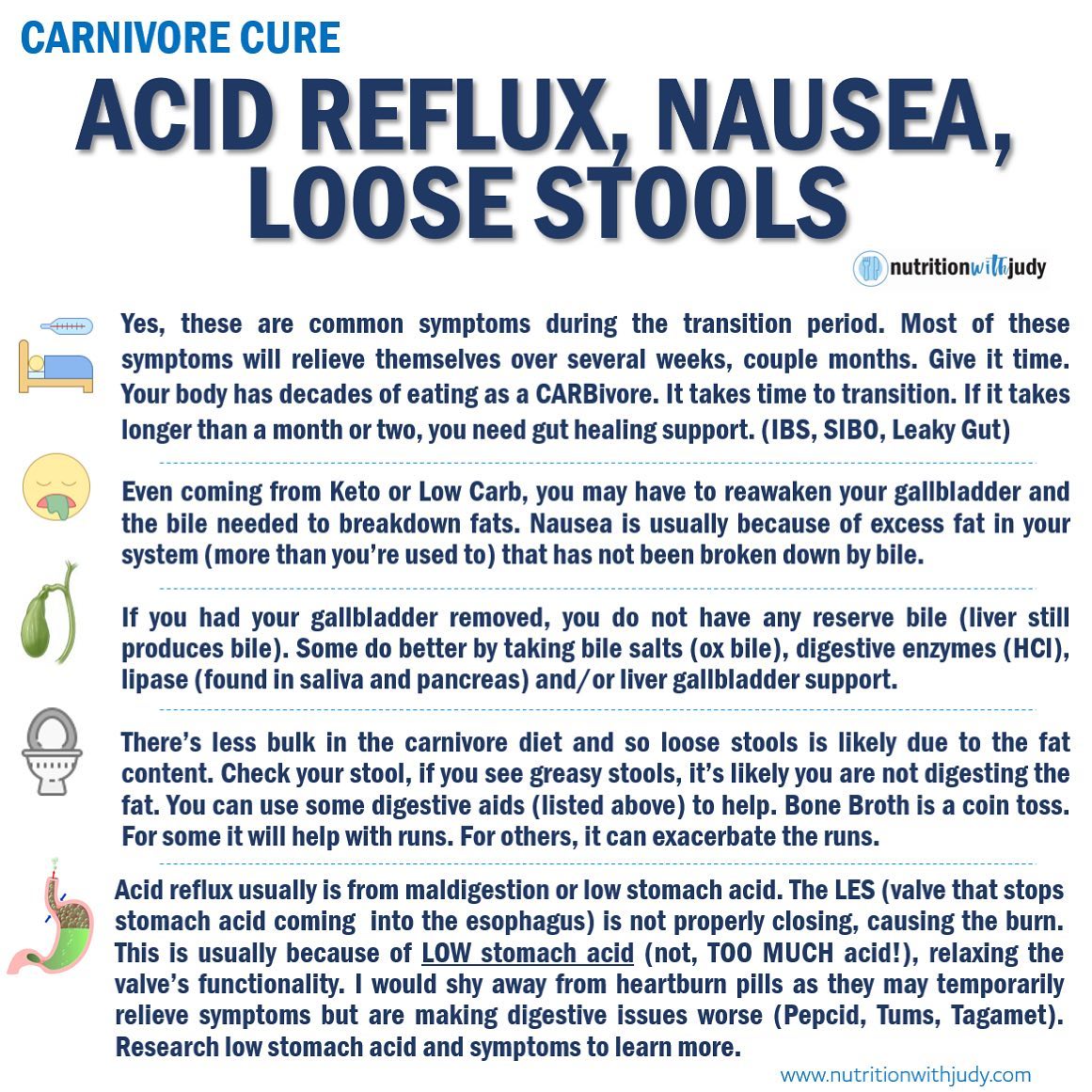

Transitioning from a diet low in animal protein to a carnivore diet, which is exclusively animal-based, also requires careful consideration to ensure a smooth adaptation process. This dietary shift can prompt the body to undergo significant changes, especially in how it processes proteins and fats.
To begin, gradually increase your intake of animal proteins while decreasing the consumption of plant-based foods. Start with easily digestible options such as eggs, fish, and dairy (if tolerated), before introducing red meats and organ meats. This phased approach helps your digestive system adjust to processing higher quantities of animal protein and fats.
Supporting digestion is crucial during this transition. Consider incorporating digestive enzymes that specifically aid in protein and fat digestion. These can alleviate potential discomfort such as bloating or indigestion that might occur as your body adapts to the increased protein load. Low stomach acid can be common for many individuals. A betaine supplement can really help break down foods effectively, assisting in this transition.
Staying hydrated and managing electrolyte balance is also important, as changes in diet can affect hydration levels and electrolyte distribution. Symptoms such as fatigue, headaches, and muscle cramps may arise as the body shifts its primary energy source from carbohydrates to fats and proteins. Sole water or bone broth can provide necessary minerals to counteract these symptoms.
Ensuring adequate fat intake is key to providing sufficient energy and facilitating the transition. Fats not only serve as a primary energy source on the carnivore diet but also help in the absorption of fat-soluble vitamins, crucial for overall health during this dietary change. Try temporary fat supports such as ox bile if you’re having trouble adjusting.
By adopting a gradual, supportive approach to increasing animal protein intake, individuals can ease their body’s transition to the carnivore diet, minimizing discomfort and optimizing adaptation.
Our Recommended Temporary Supports for Transitioning to the Carnivore Diet
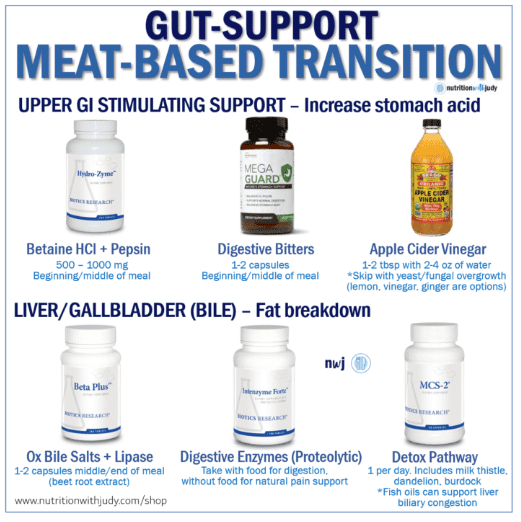

Transitioning to the carnivore diet requires thoughtful consideration of digestive and nutritional support to ensure a smooth and comfortable adaptation process. To aid this transition, we recommend a comprehensive approach focusing on digestion and electrolyte balance.
Hydro Zyme is advised for those needing additional hydrochloric acid (HCl), enhancing stomach acidity to improve the digestion of proteins and fats, crucial components of the carnivore diet. Beta Plus is recommended for ox bile supplementation, particularly beneficial for individuals with compromised bile production or those who have had their gallbladders removed, assisting in the emulsification and breakdown of dietary fats.
To support the overall digestion of proteins, fats, and carbohydrates, Interzyme Forte, a broad-spectrum digestive enzyme supplement, is suggested. It helps reduce digestive discomfort, such as bloating and gas, which can occur during dietary transitions. Lastly, maintaining electrolyte balance is vital due to the diuretic effect of a low-carb, high-protein diet. Sole water, a solution made from mineral salt dissolved in water, provides a natural and effective way to replenish electrolytes, ensuring hydration and minimizing transition symptoms such as fatigue and cramps.
Our Gut Healing Kit is generally the best place to start for individuals interested in temporary supports for transitioning to the carnivore diet.
Closing Thoughts On How to Transition to the Carnivore Diet
Transitioning to the carnivore diet involves a significant dietary shift that requires careful planning and support to mitigate symptoms and ensure a smooth adaptation. Starting with a gradual reduction in carbohydrate intake and slowly increasing the consumption of animal-based foods helps the body adjust to using fats and proteins as primary energy sources.
Adequate hydration and electrolyte management, through increased water intake and supplementation with key electrolytes such as sodium, potassium, and magnesium, are crucial to prevent dehydration and balance electrolyte levels. Incorporating bone broth can provide additional support by supplying essential minerals and aiding digestion.
To ease the digestive adjustments to a high-protein and high-fat diet, supplements such as Hydro Zyme for hydrochloric acid, Beta Plus for ox bile, and Interzyme Forte for broad-spectrum digestive enzymes are recommended. These supplements assist in the efficient breakdown and absorption of the increased intake of proteins and fats. Additionally, sole water is advised to replenish electrolytes naturally, addressing the diuretic effects of the diet and ensuring proper hydration.
Overall, transitioning to the carnivore diet with minimal symptoms requires a phased approach, attention to hydration and electrolytes, digestive support through supplementation, and patience as the body adapts to this new way of eating.
Work With Our Trusted Carnivore Diet Functional Nutritional Therapy Practitioners
The Nutrition with Judy practice is honored to be a trusted carnivore diet practitioner support serving clients from around the globe. We’re passionate about helping our clients achieve root-cause healing in order to lead the best quality of life possible that’s nearly symptom-free. Our team is dedicated to helping individuals transition seamlessly to the carnivore diet. We welcome you to explore our free resources and are always available to support you through personalized protocols. Our Symptom Burden Assessment (SBA) is the perfect starting point for discovering your root cause and is required to work with our team— you can learn more in-depth about this powerful tool here.
Start your root-cause healing journey today and contact us any time with any questions or concerns.
DISCLAIMER: This content is for educational purposes only. While we are board-certified in holistic nutrition and are nutritional therapy practitioners, we are not providing medical advice. Whenever you start a new diet or protocol, always consult with your trusted practitioner first.




